
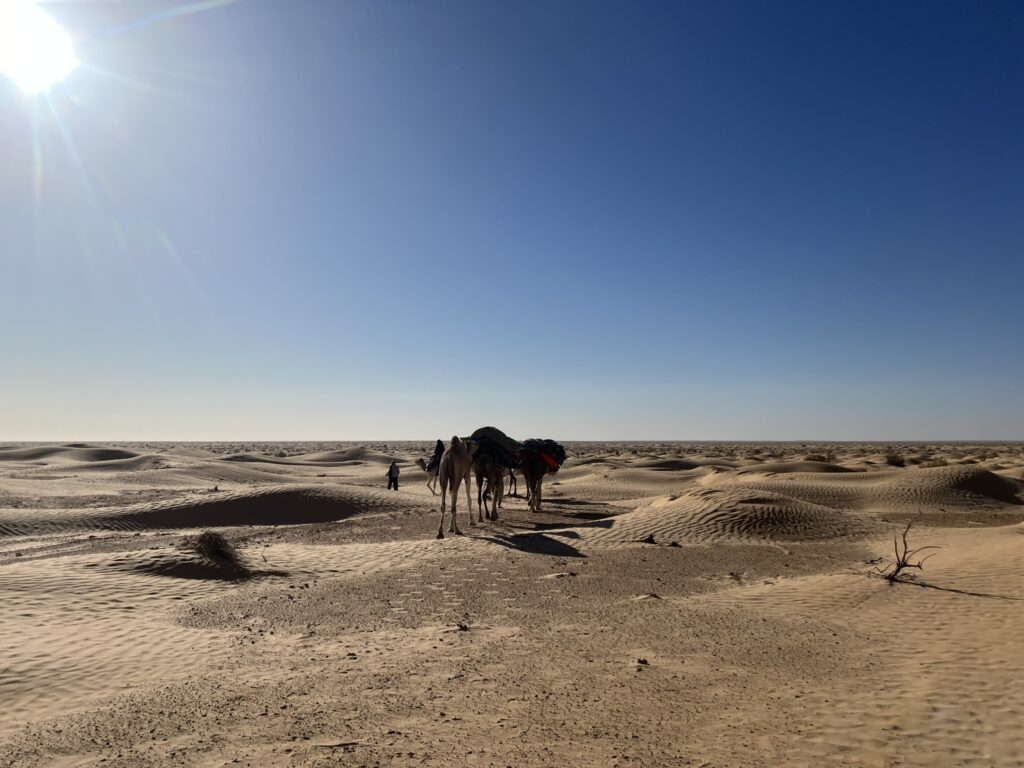

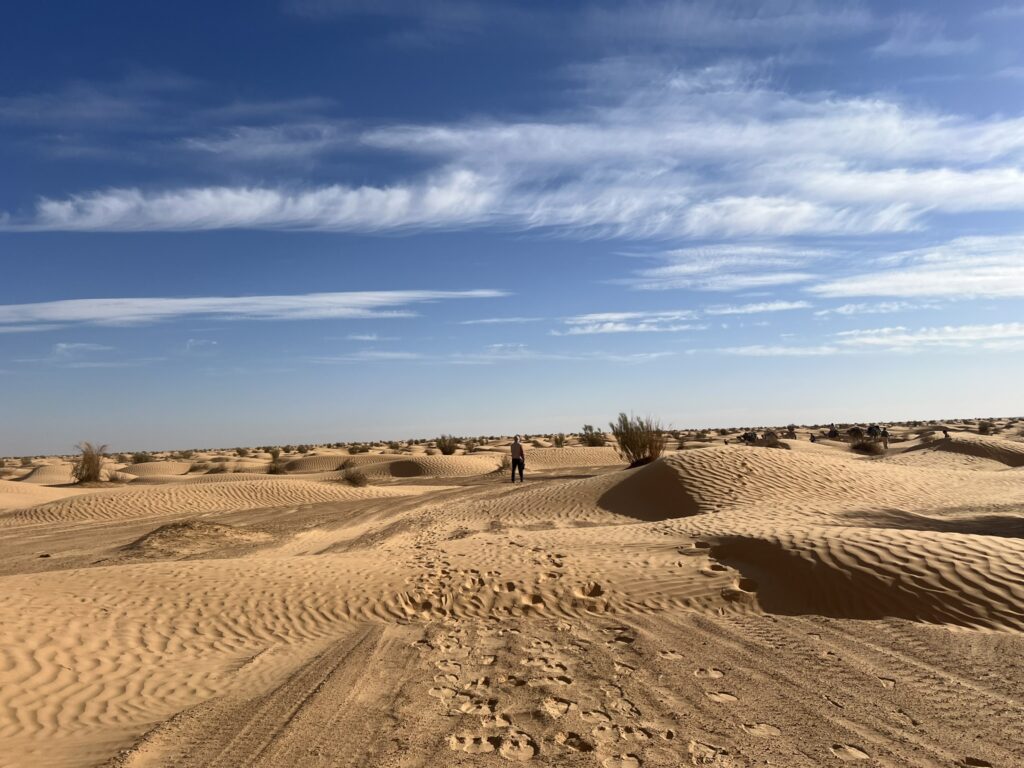
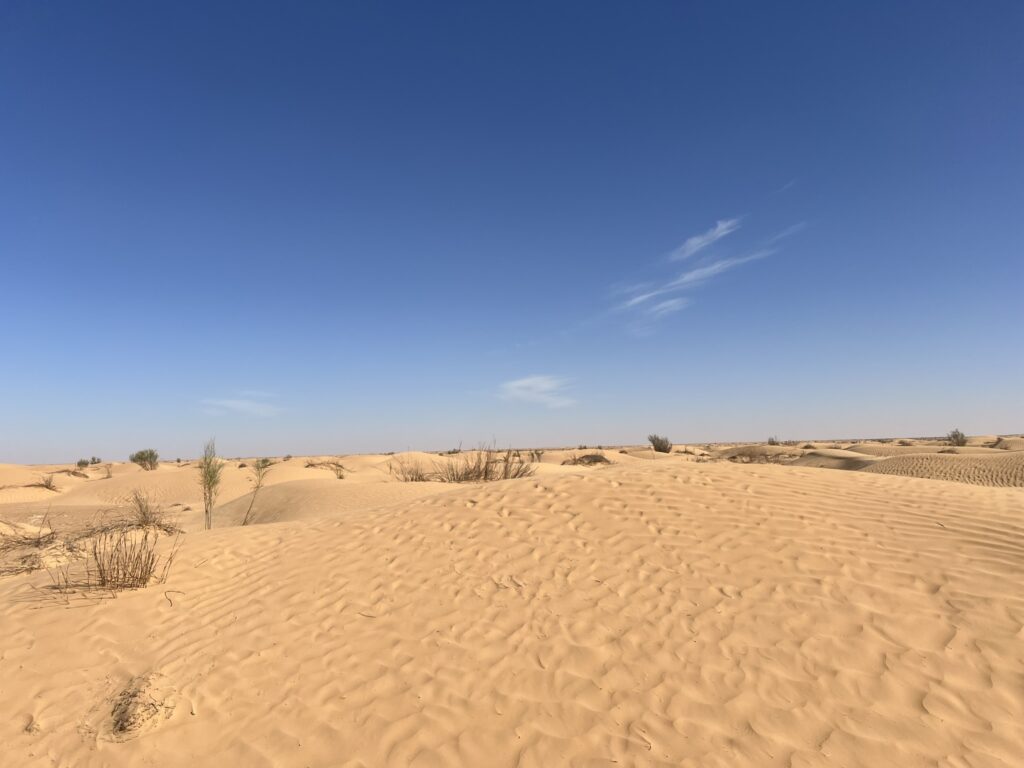
11月は砂漠では一番いい季節らしいです。日中はそれほど暑くないし、夜は寒いけれど1月、2月のように凍ったりしないから。
November seems to be the best season in the desert. It’s not that hot during the day, and although it’s cold at night, it doesn’t freeze like it does in January and February.
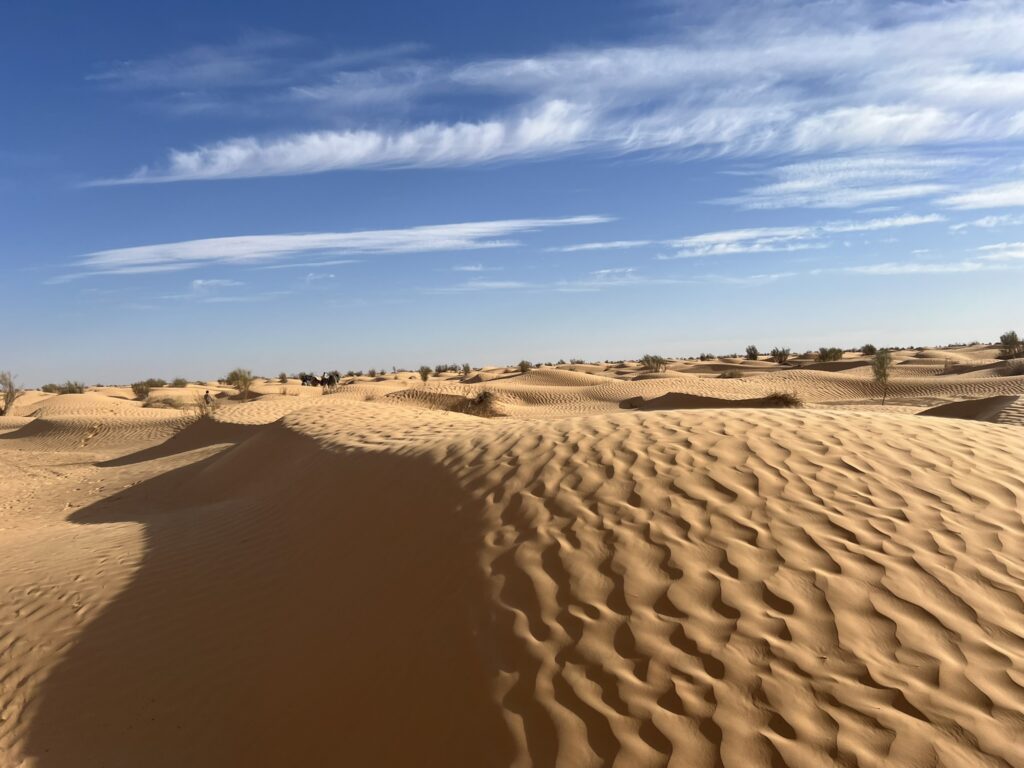

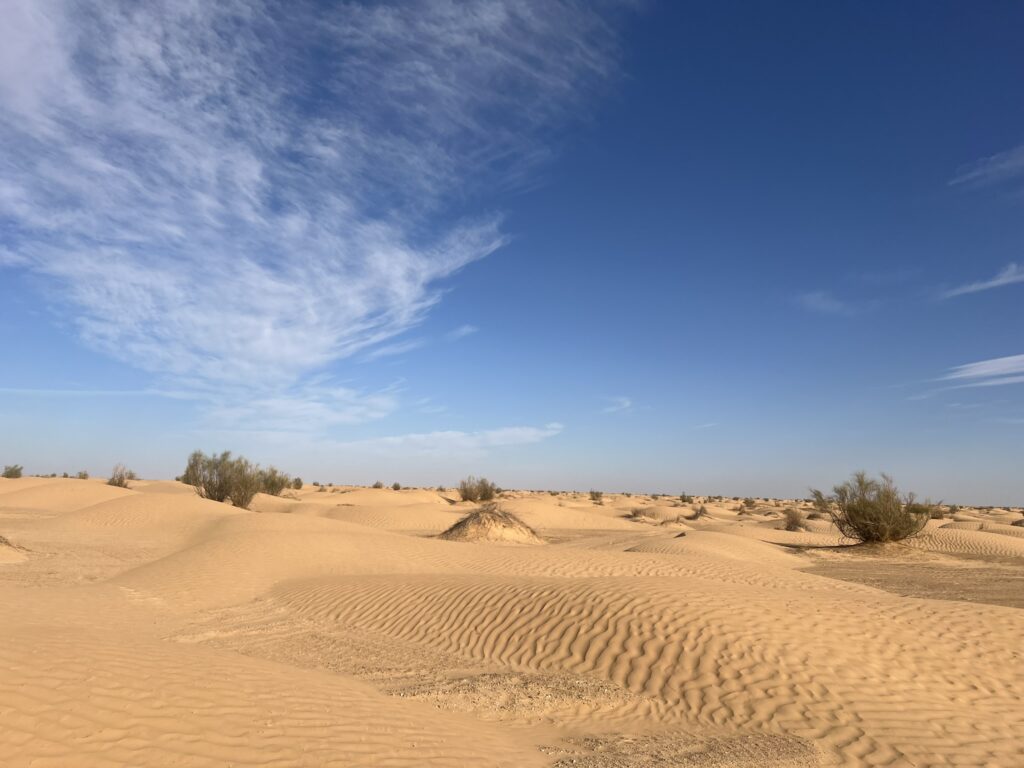
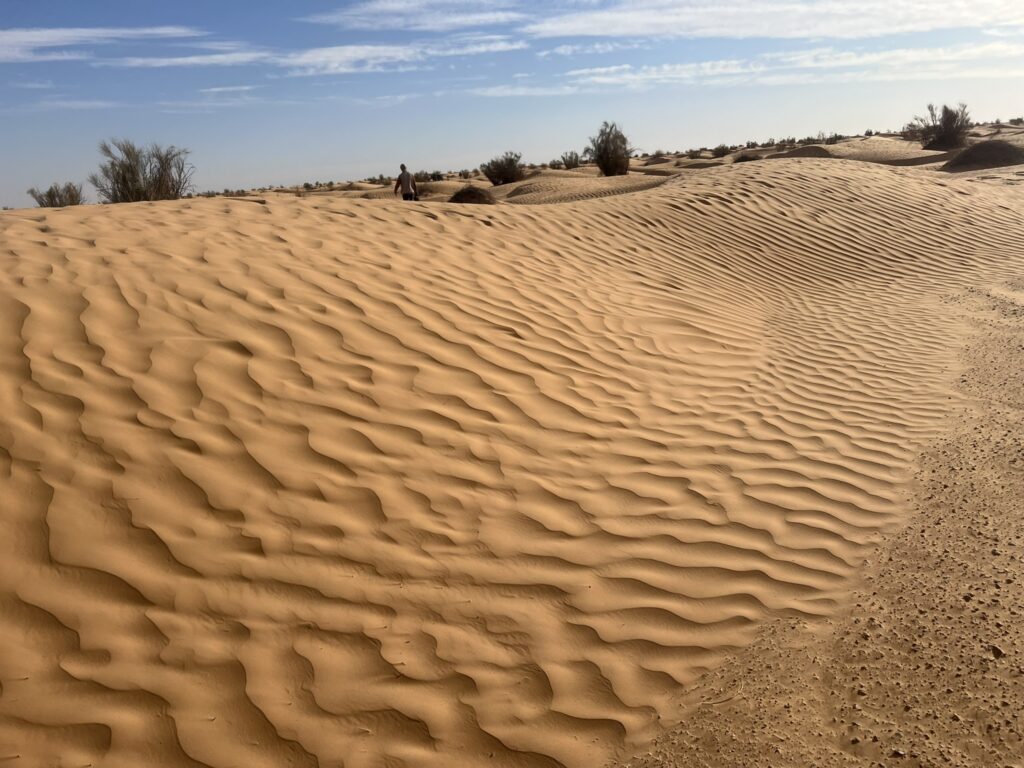
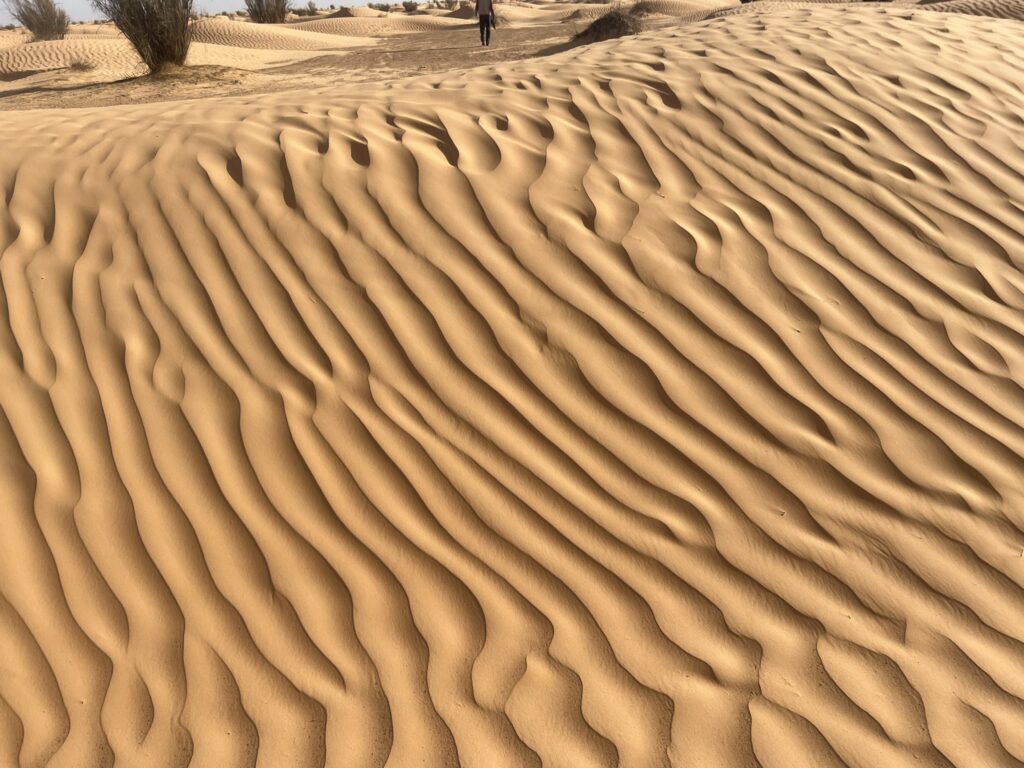
人に指紋があるように、砂漠には風がつける風紋(ふうもん)がある。
Just as people have fingerprints, deserts have wind patterns.
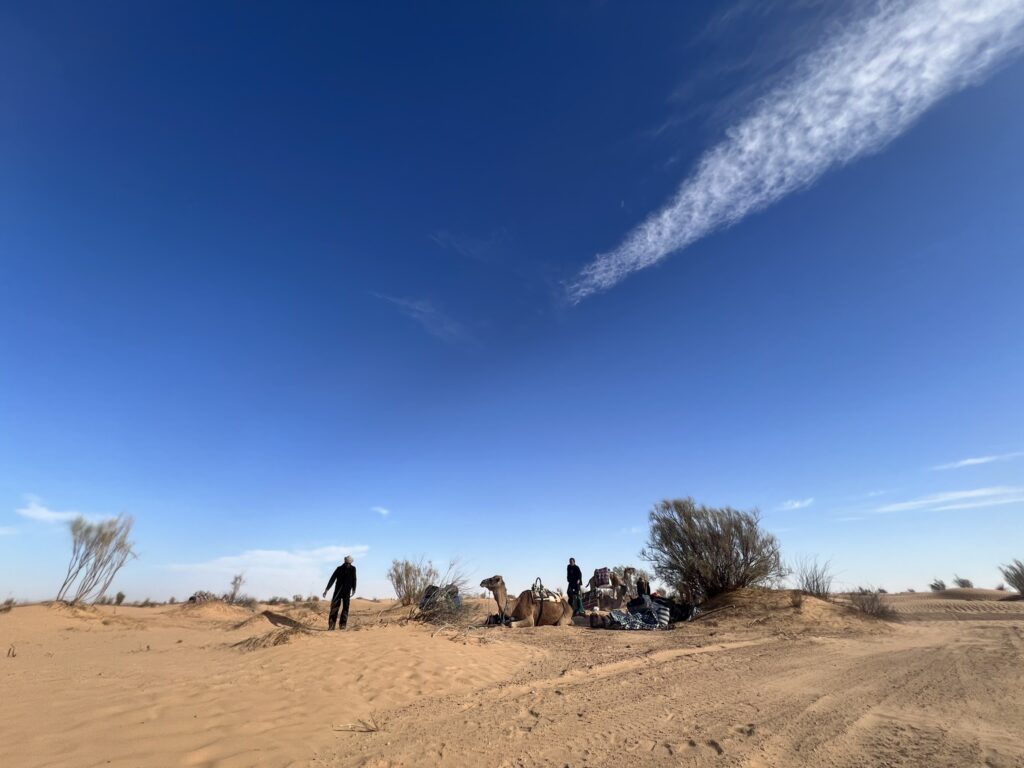
午前中に2~3時間、歩いてからランチ。ラクダも荷物を下ろして休憩します。
休憩や野営地を選ぶときには、ラクダのごはんと、私たちの焚火のために、灌木のある場所を選びます。
“In the morning, we walk for 2 to 3 hours before having lunch. We also take a break and let the camels rest by unloading their baggage. When choosing rest stops and campgrounds, we look for places with shrubbery to provide food for the camels and wood for our campfire.”

ラクダは個性豊か。荷物が重くてご機嫌ナナメのラクダもいて申し訳ないやら、そのすねた様子が可笑しいやら。
The camels have unique personalities.
There were 6 camels. Some camels were in a bad mood because their luggage was heavy. As much as I felt bad, I found it quite cute and funny.

座るときは、上手に前足、後ろ足を折りたたんでいる。ラクダ、初めて見たかも。こんなに背の高い動物だったとは。
When they sit, they cleverly fold their front and hind legs. It might be the first time I’ve seen a camel. I had no idea they were such tall animals.
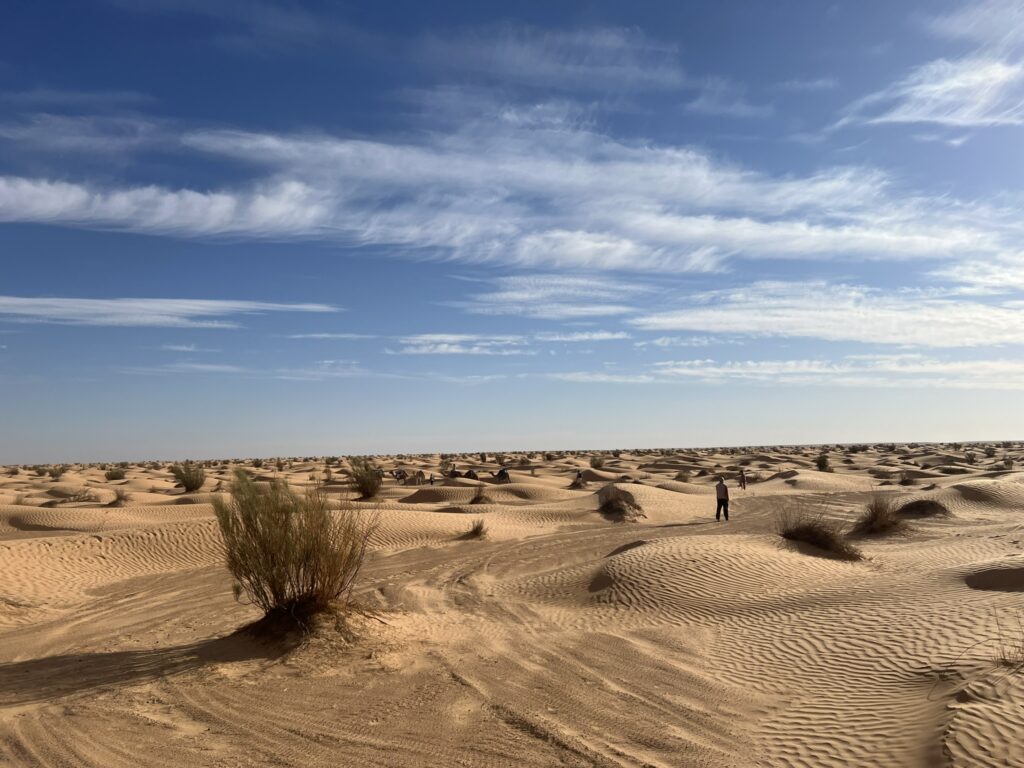
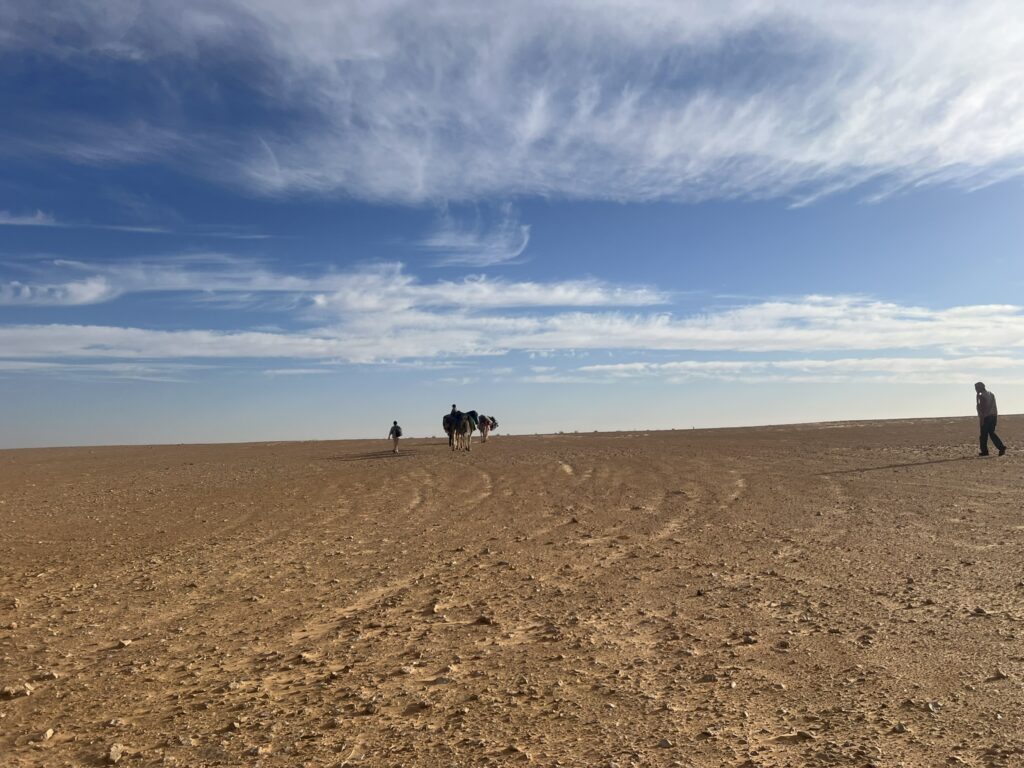
初めてなのに、どこか懐かしい気のするサハラ。この景色がすっと体内に溶け込んでいく感じ。何の違和感もなく・・・。
Despite it being my first time, I feel a sense of familiarity with this scenery. It seems to effortlessly blend into my being.
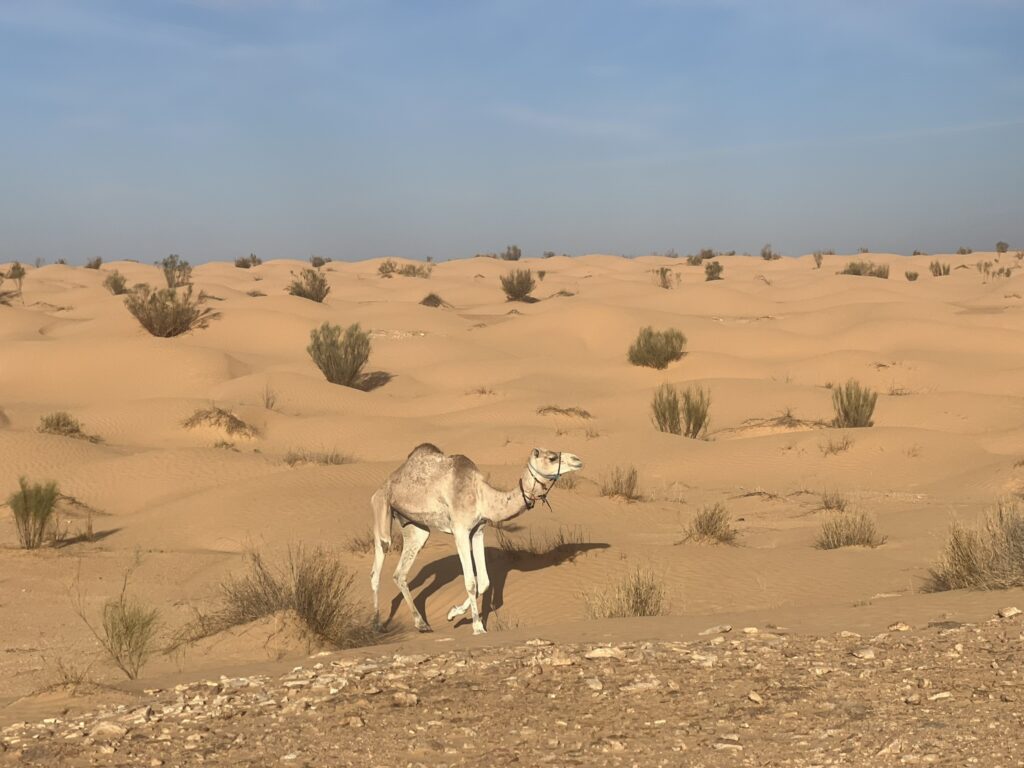
この身軽でお気楽なお方は、荷物を運ばせるためではなくて、競争ラクダなのだそう。足慣らしのために連れてきたのだとか。マイペースでも、ちゃんとついて来ます。
This light and easy-going fella is apparently a racing camel, not one to carry cargo. It seems he was brought here to get a feel for his footing. He traveled at his own pace, but always followed us properly.
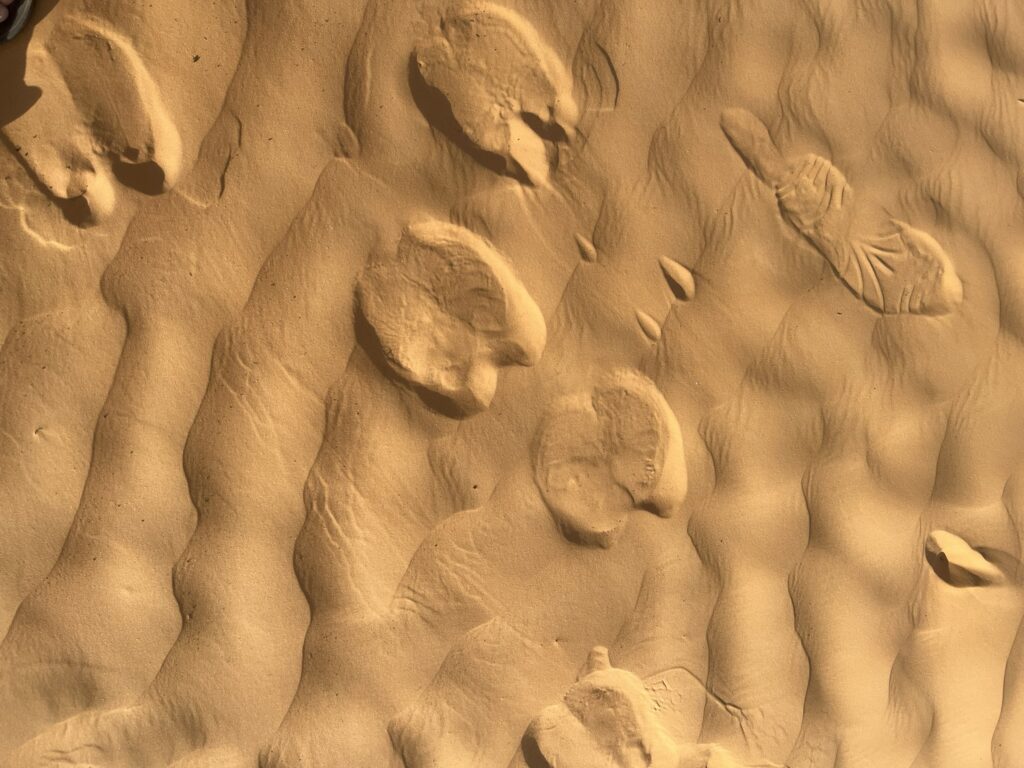
ラクダのひづめ、やっぱりしっかりしてる。
Camels’ hooves, they are so sturdy.
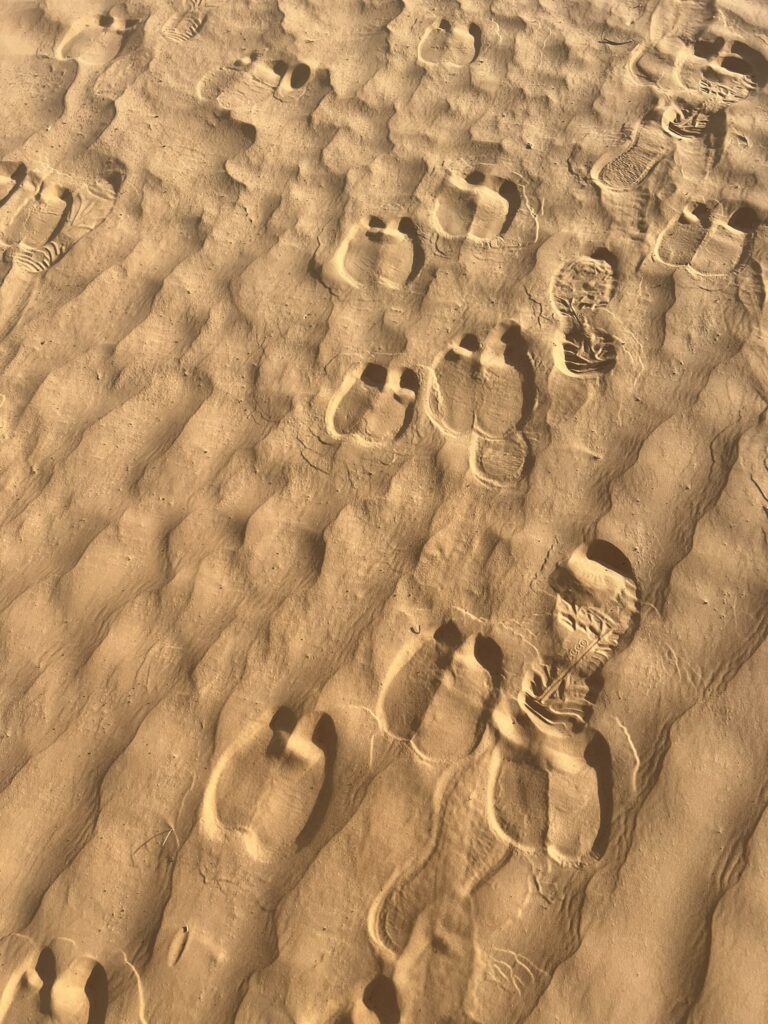

足跡は命綱。
キャラバンを見失ったら、この足跡について行けば大丈夫。ラクダの歩みは、思ったより早いです。
The footprints are our lifeline. If we lose sight of the caravan, just follow these footprints.
The pace of the camel’s stride is faster than I expected.
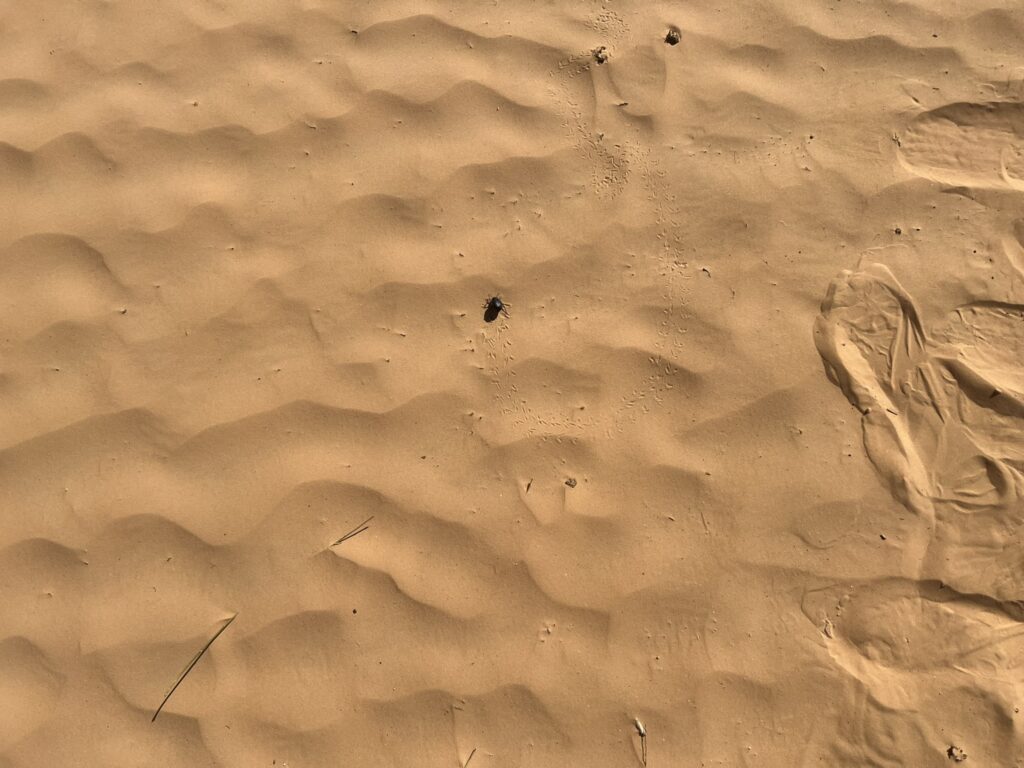
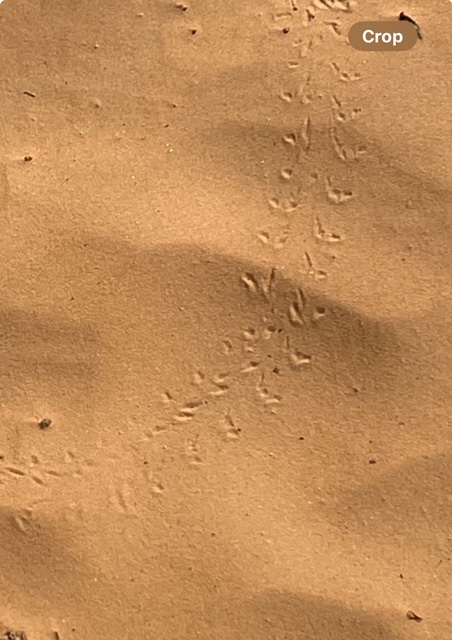
「ふんころがし」の足跡がかわいい。
Dung beetle trails were cute.
生き物は、ふんころがし、ハエ、タカ、朝方さえずっていた小鳥以外、見ることはありませんでした。
I haven’t seen any living creatures except for dung beetles, flies, hawks, and birds that singing in the early morning.

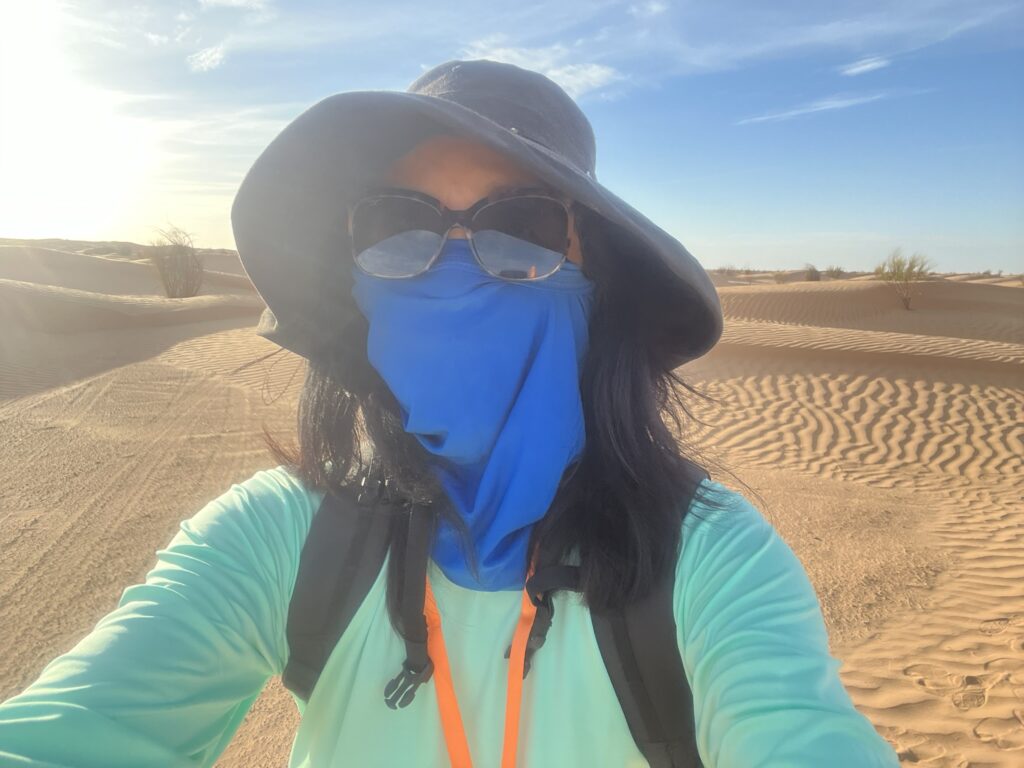
細やかでさらさらなサハラの砂は、どこにでも入りこんでくるけど、そんなに気にならないのが不思議なくらい。砂漠にいるだけで、かなり口に入っていると思う。時々じゃりじゃりするし(笑)。
The fine and silky Sahara sand manages to find its way everywhere, yet strangely, it’s not as bothersome as I’d expect. Just being in the desert, I’m sure a fair amount of the sand finds its way into my mouth. Occasionally, I become aware of the gritty sensation of sand in my mouth.(Lol).

ラクダの足跡と、黒くて見つけやすいラクダの糞は道しるべになってくれる。
(ラクダは歩きながら糞をするのです!)
Camel dung is black and easy to find, and can serve as a guidepost in the desert.
(Camels defecate while walking!)
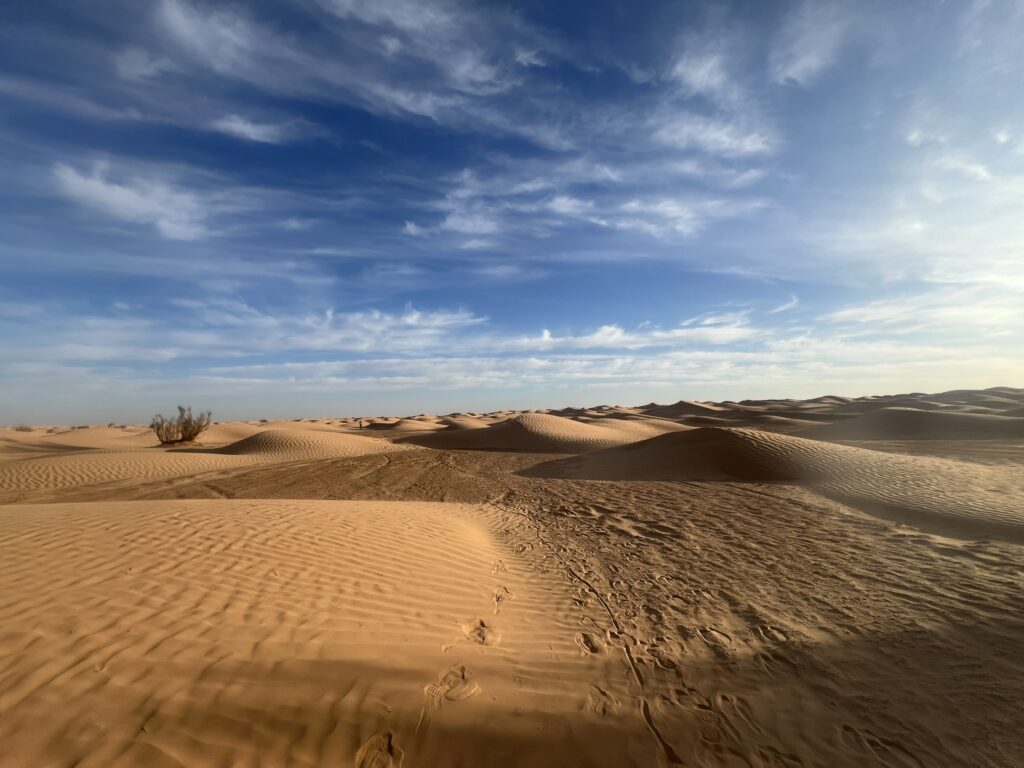
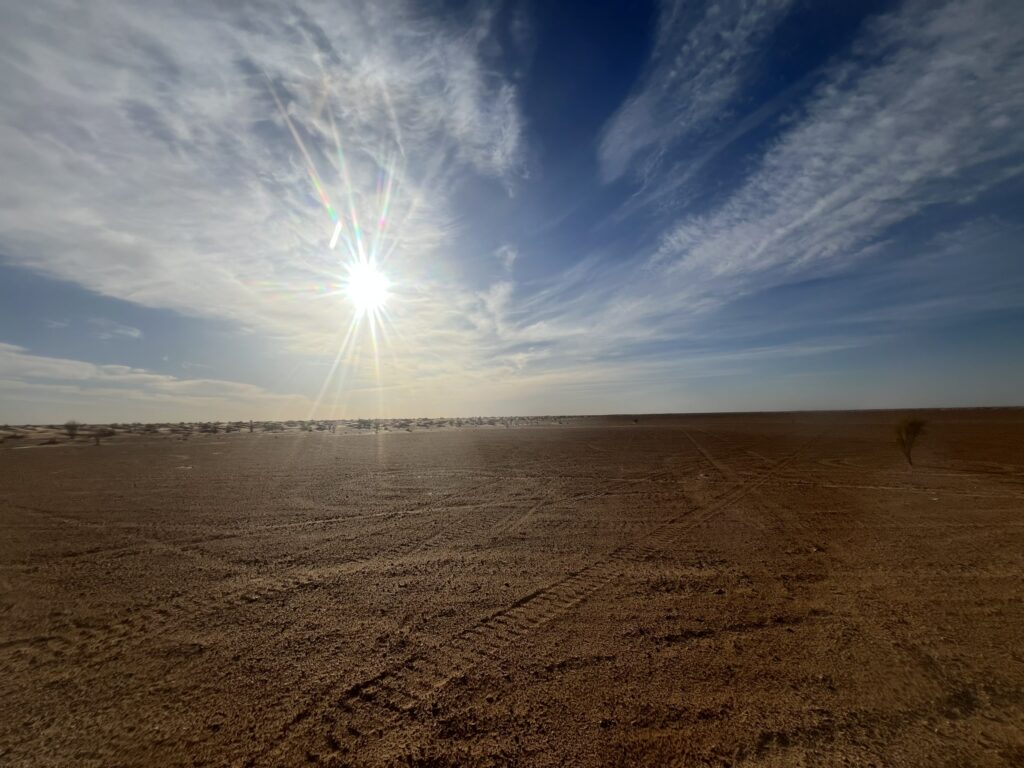
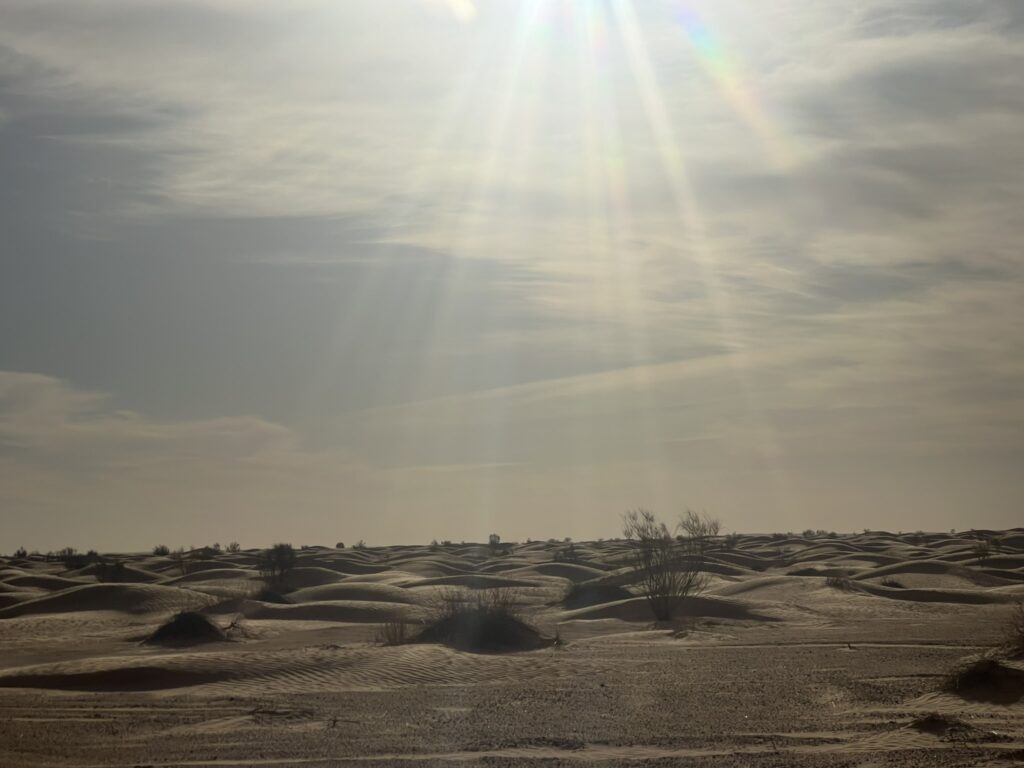
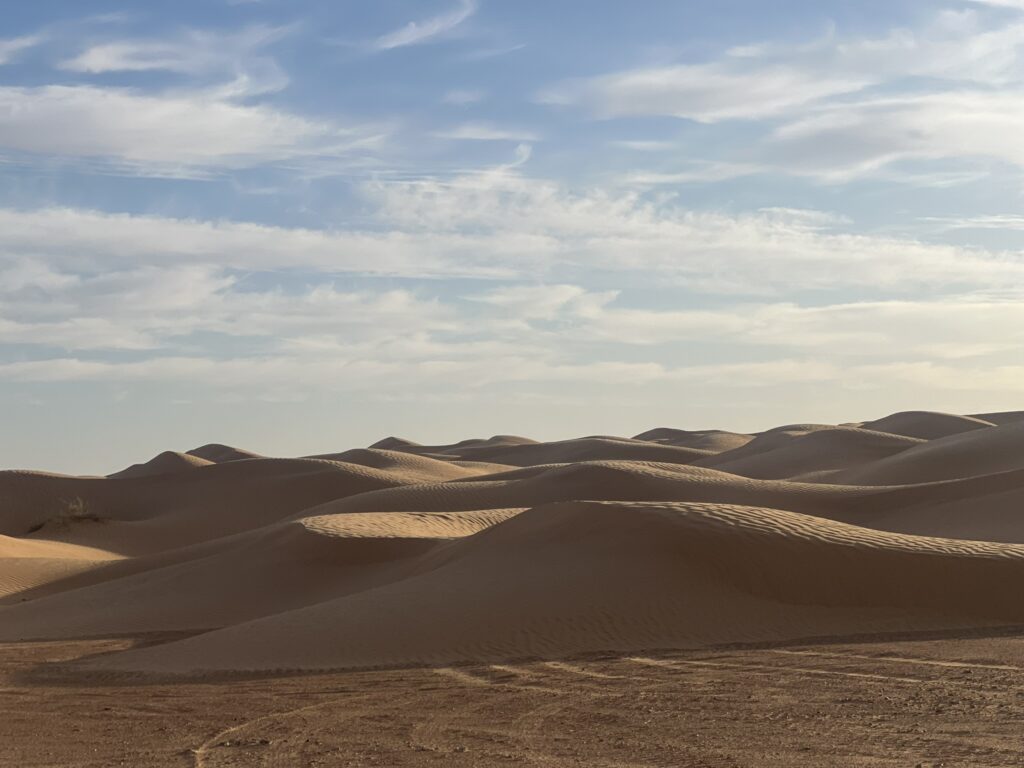
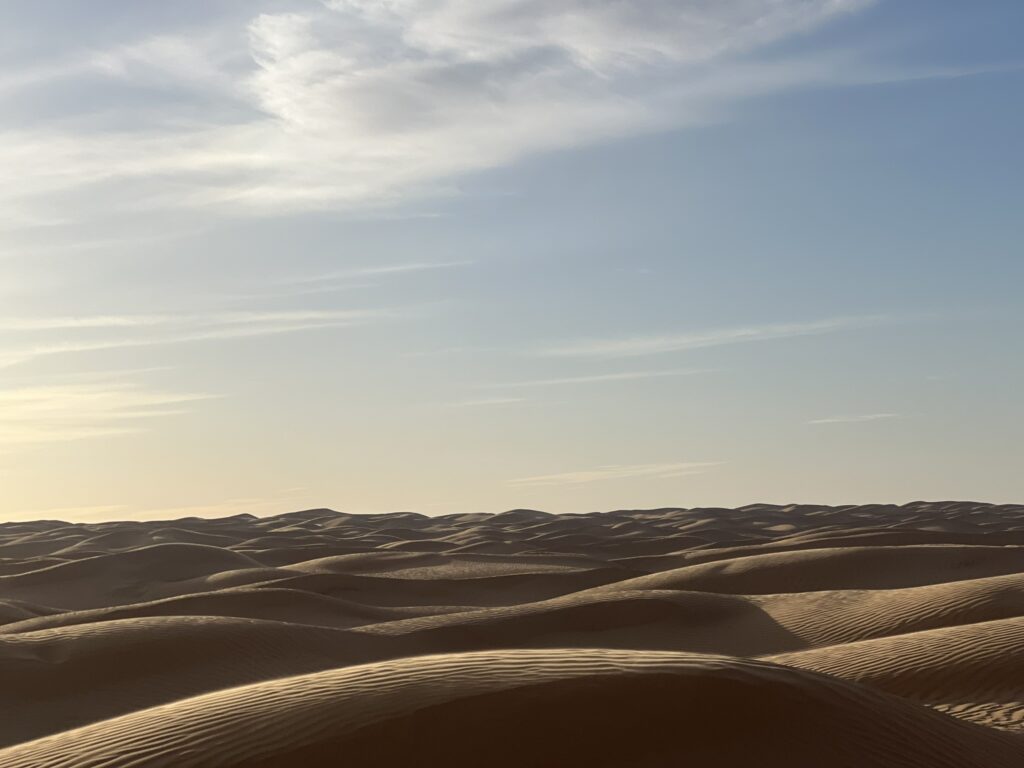
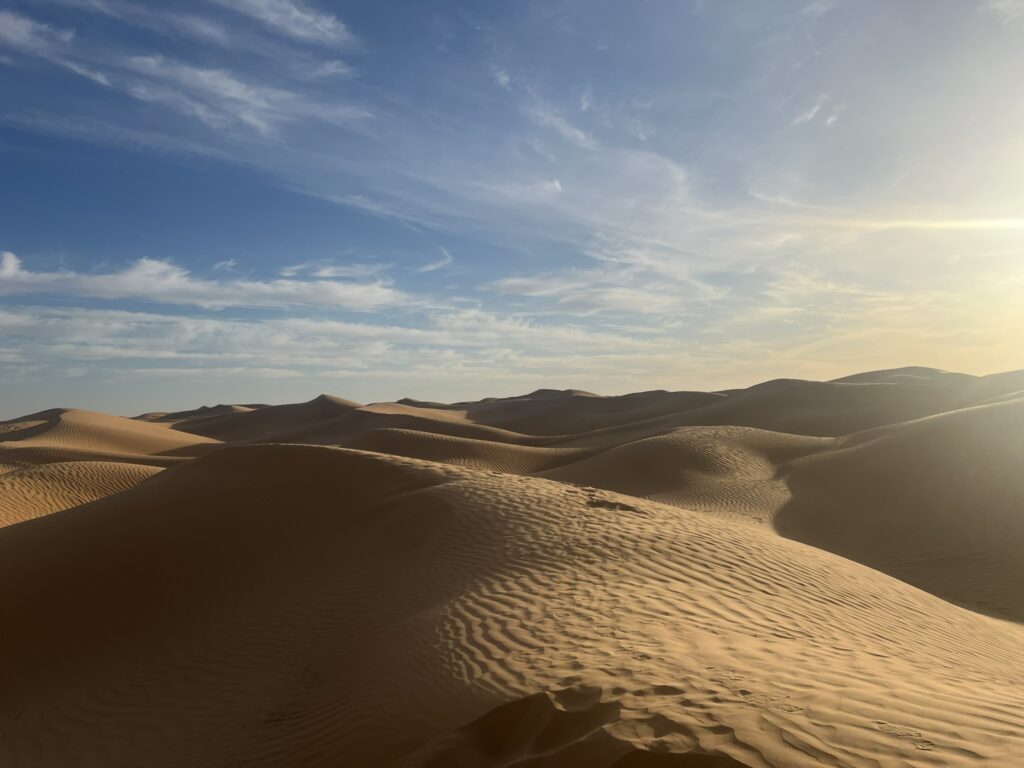
砂漠地形は風と季節雨が形成する。砂丘、砂平原、砂海(エルグ)、岩石高地(ハマダ)、礫平原(レグ)、涸れ谷(ワディ)、塩類平原(シャット)などがある。エルグは砂丘が連なる光景で、サハラ砂漠といえばまず連想される光景ではあるが、エルグは砂漠全体の14パーセントにすぎず、多くは台地状の岩石砂漠である。(Wikipedia)
The desert landscape is shaped by wind and seasonal rains. It includes sand dunes, sand plains, sand seas (ergs), rocky plateaus (hamadas), gravel plains (regs), dried riverbeds (wadis), salt flats (chotts), and more. Ergs are the iconic images of sand dunes stretching in the Sahara, and while they are a significant part, comprising only 14 percent of the entire desert, much of the Sahara is characterized by plateau-like rocky deserts.(Wikipedia)
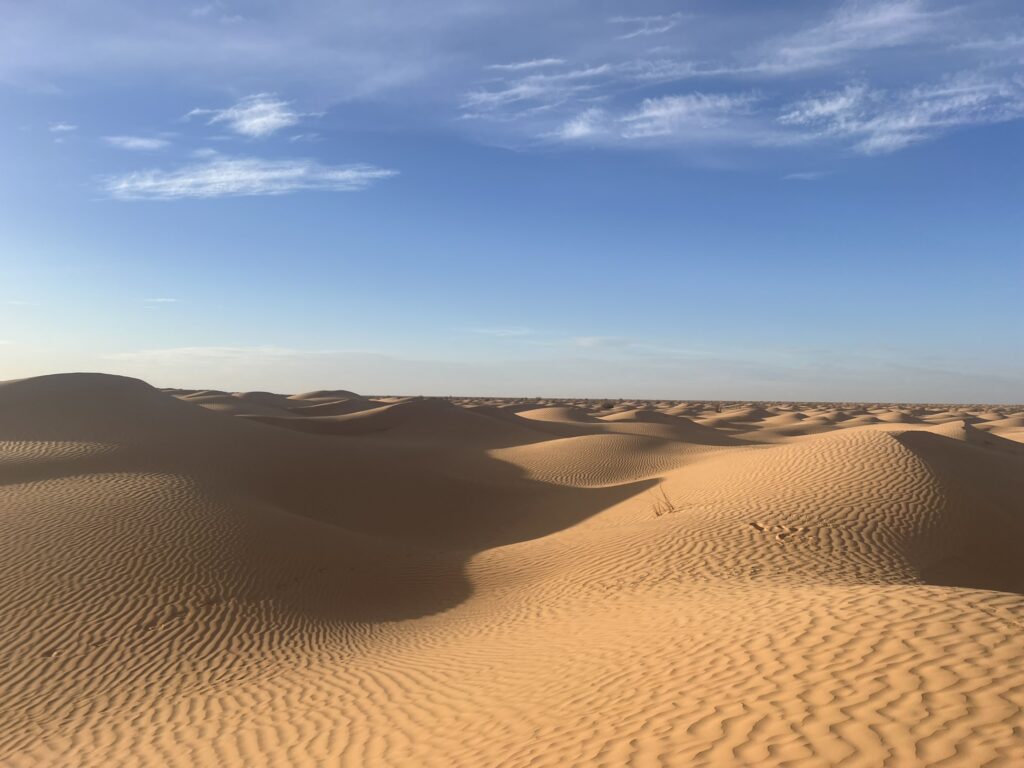
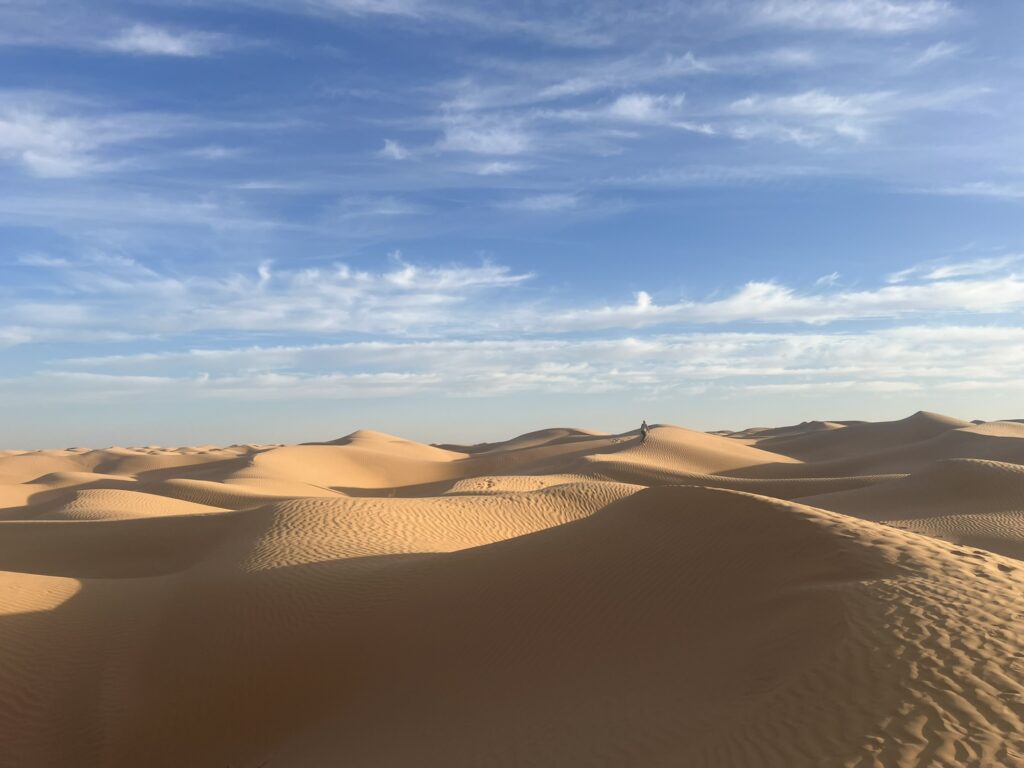
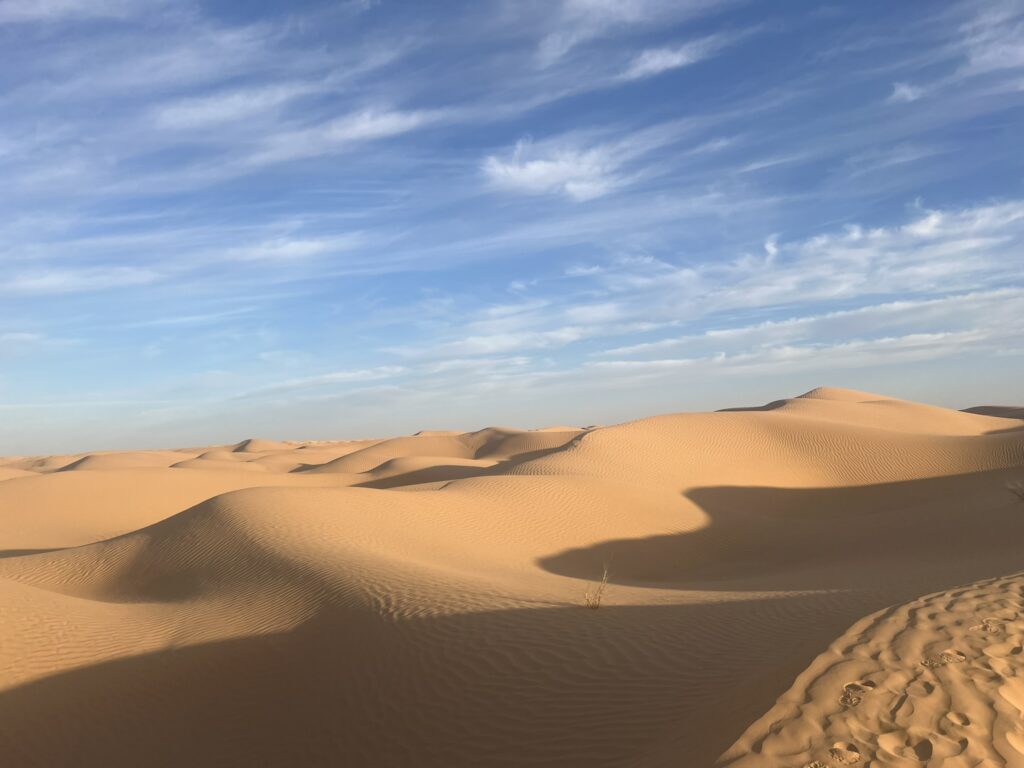
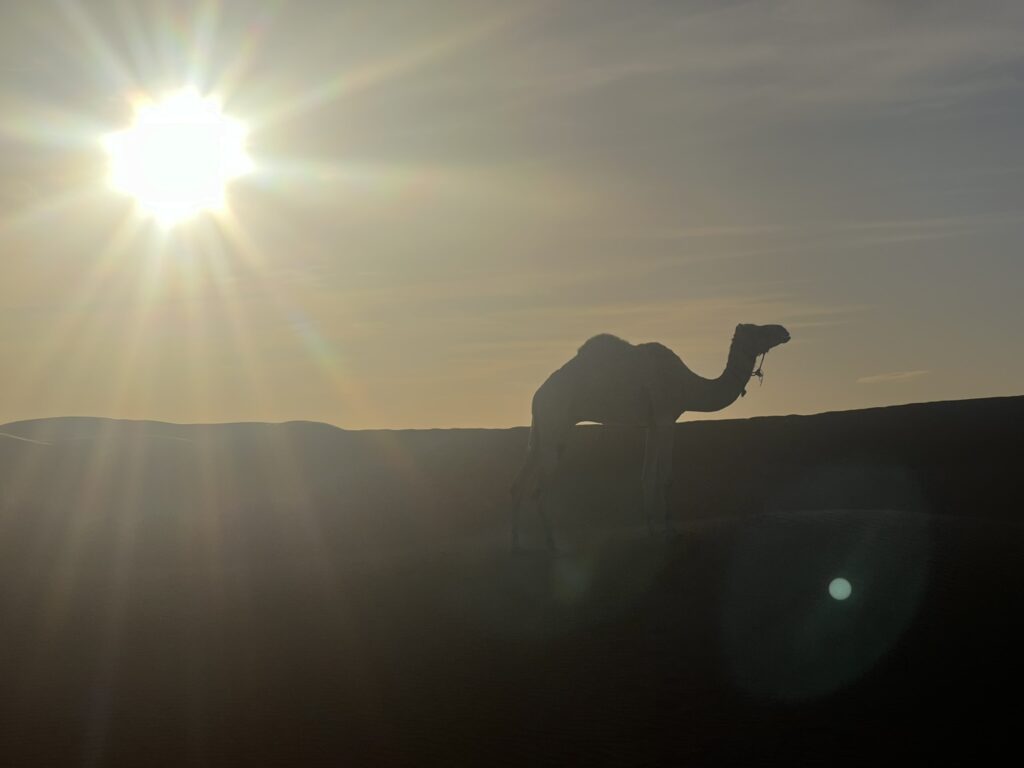
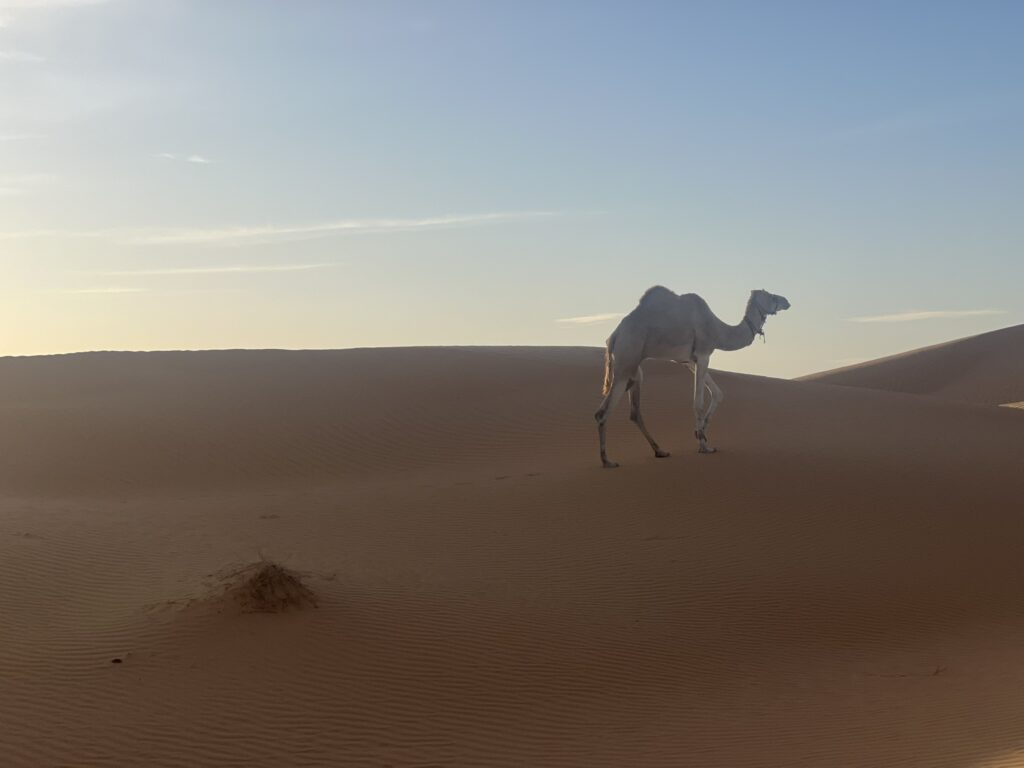
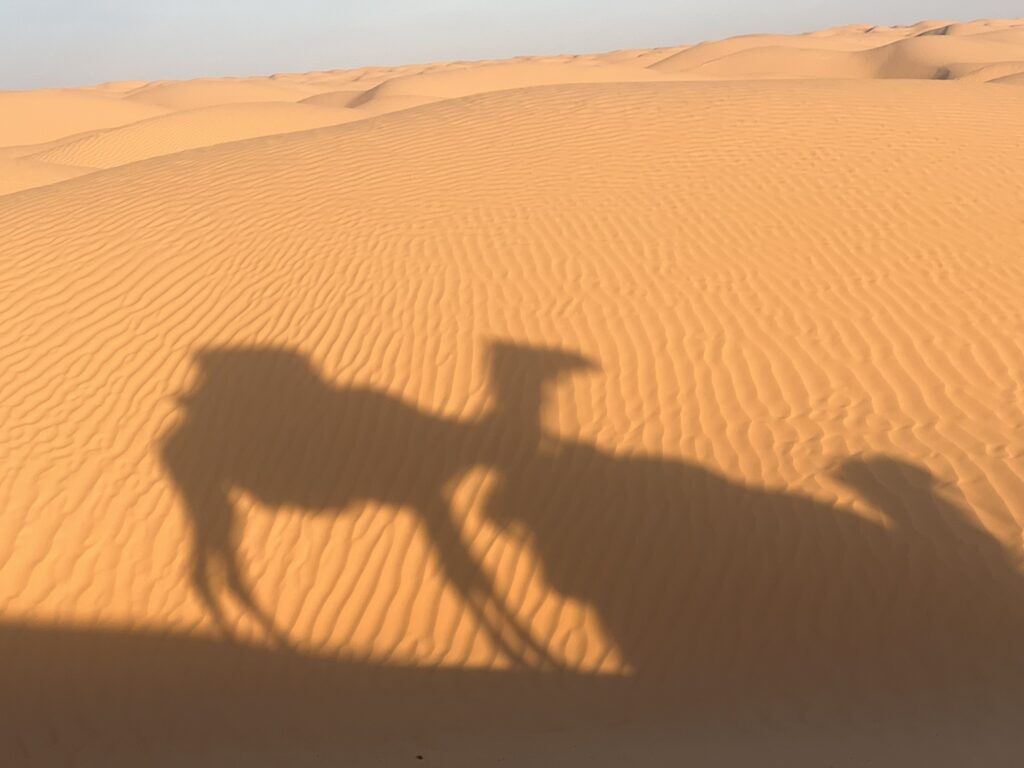
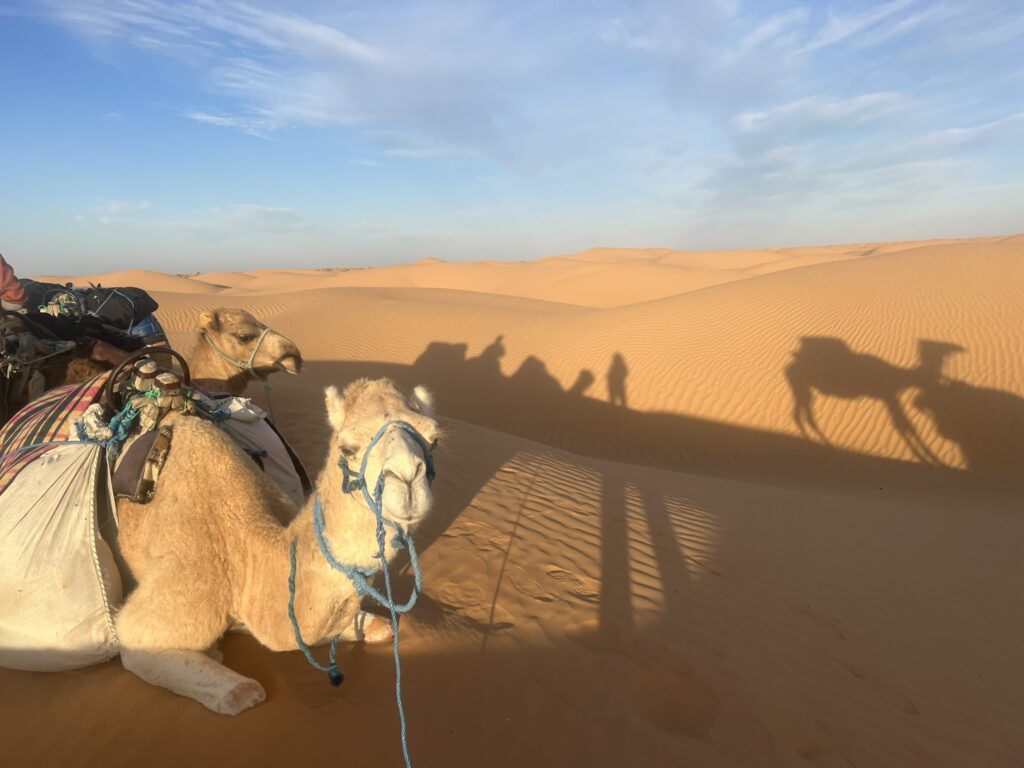
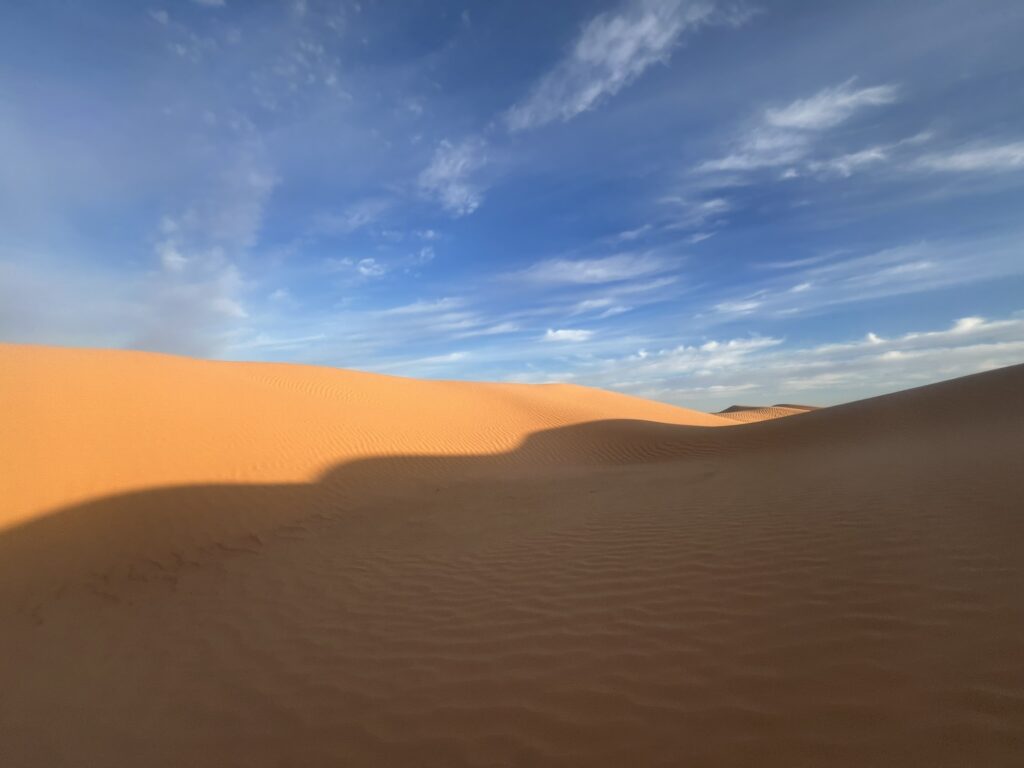
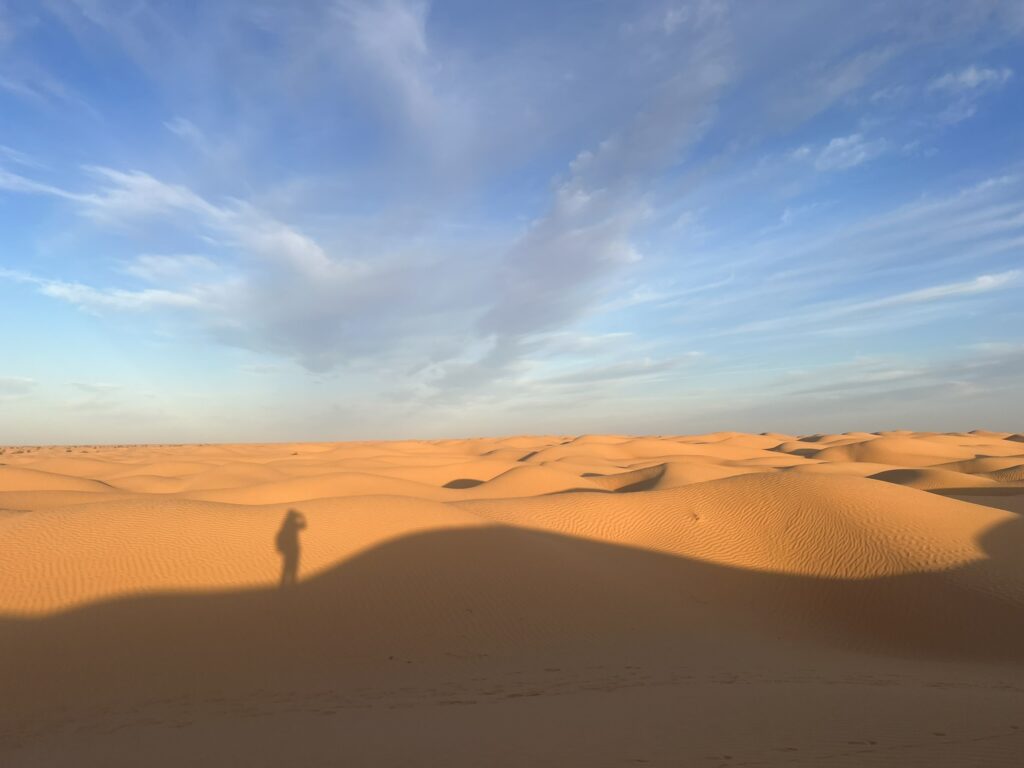


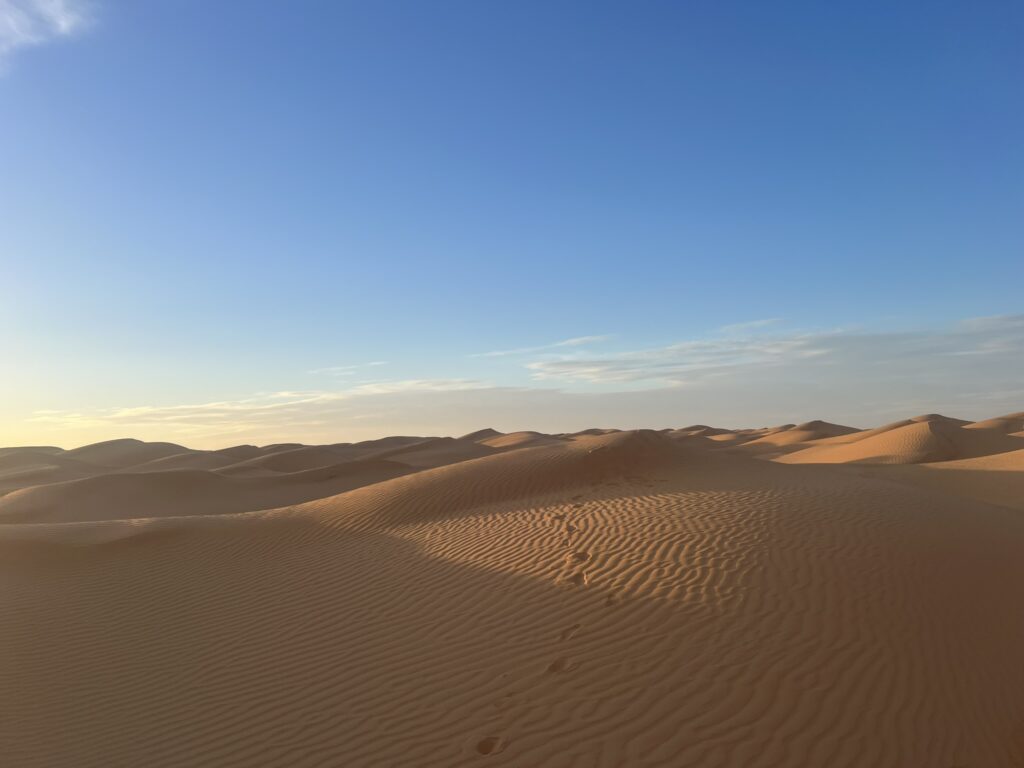
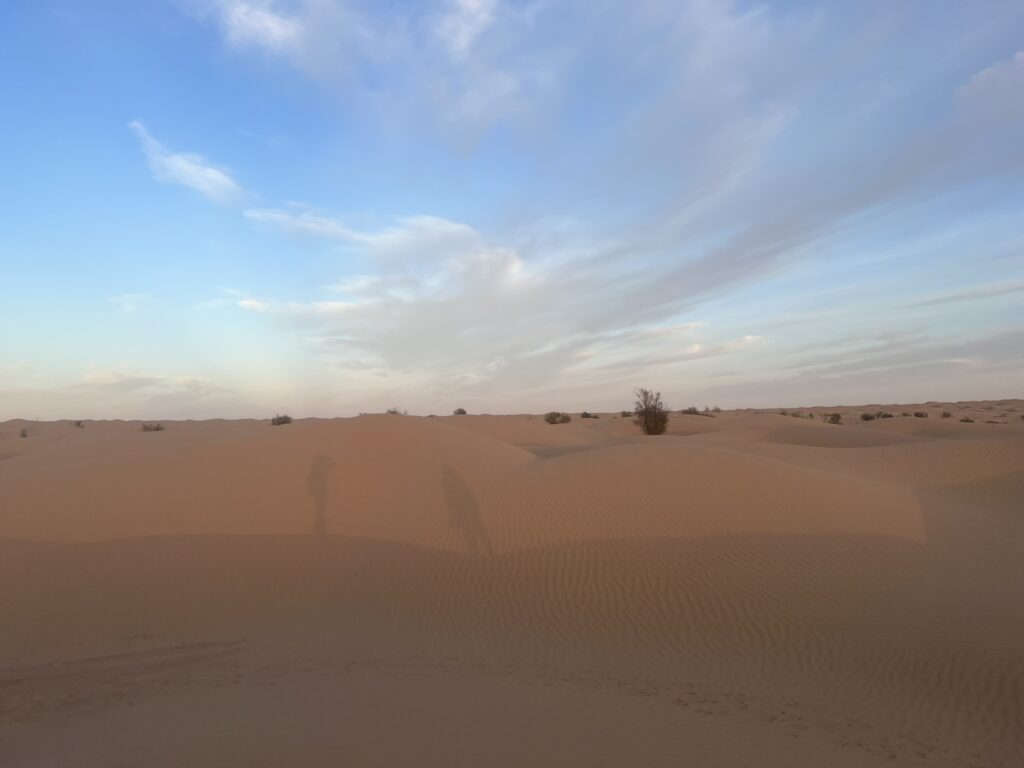
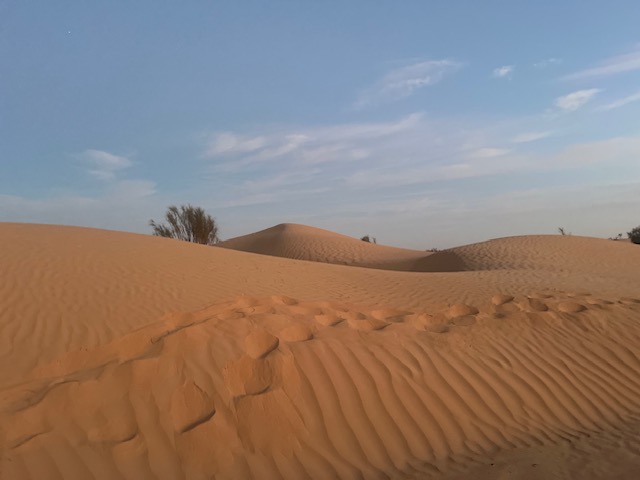
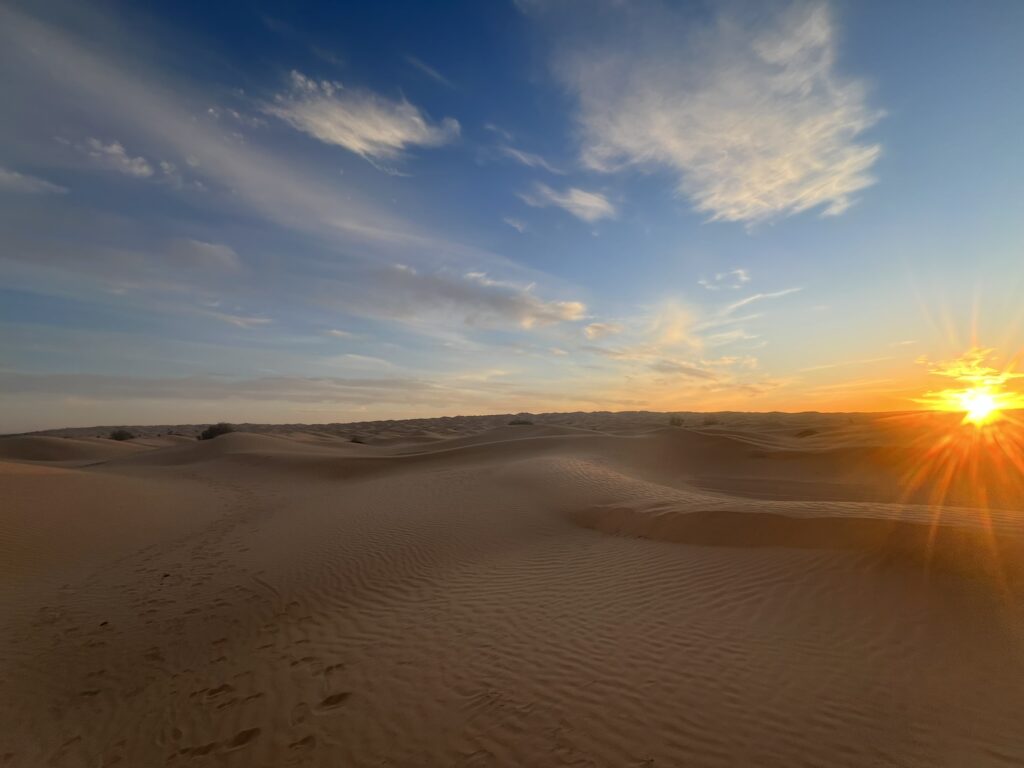

ラクダも荷物を下ろしてごはんの時間。
Before the sun sets, we start preparing for the camp. The camels also have their baggage unloaded, and it’s time for their dinner.”
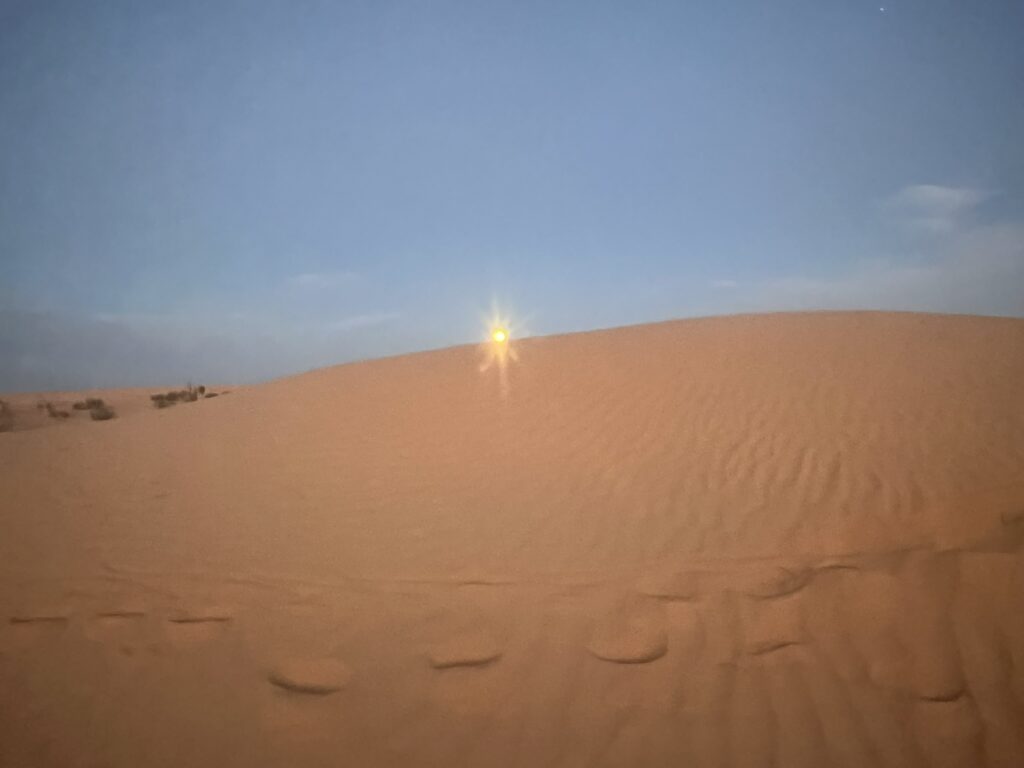
砂漠に月が昇り始めました。
The moon has begun to rise over the desert.

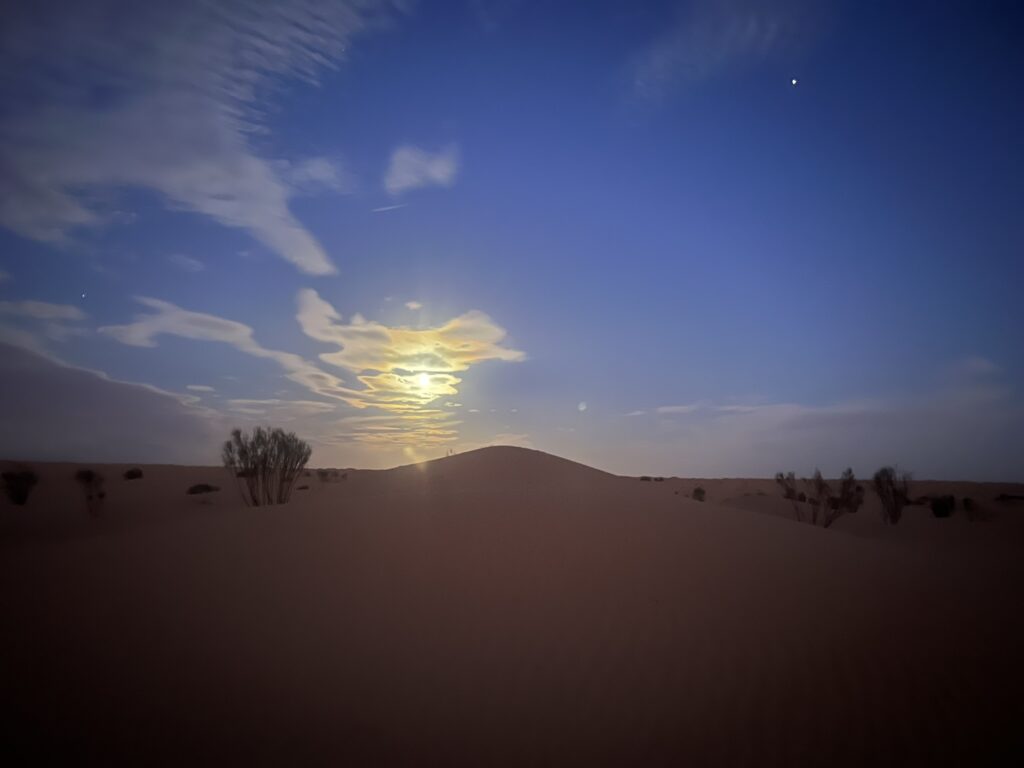
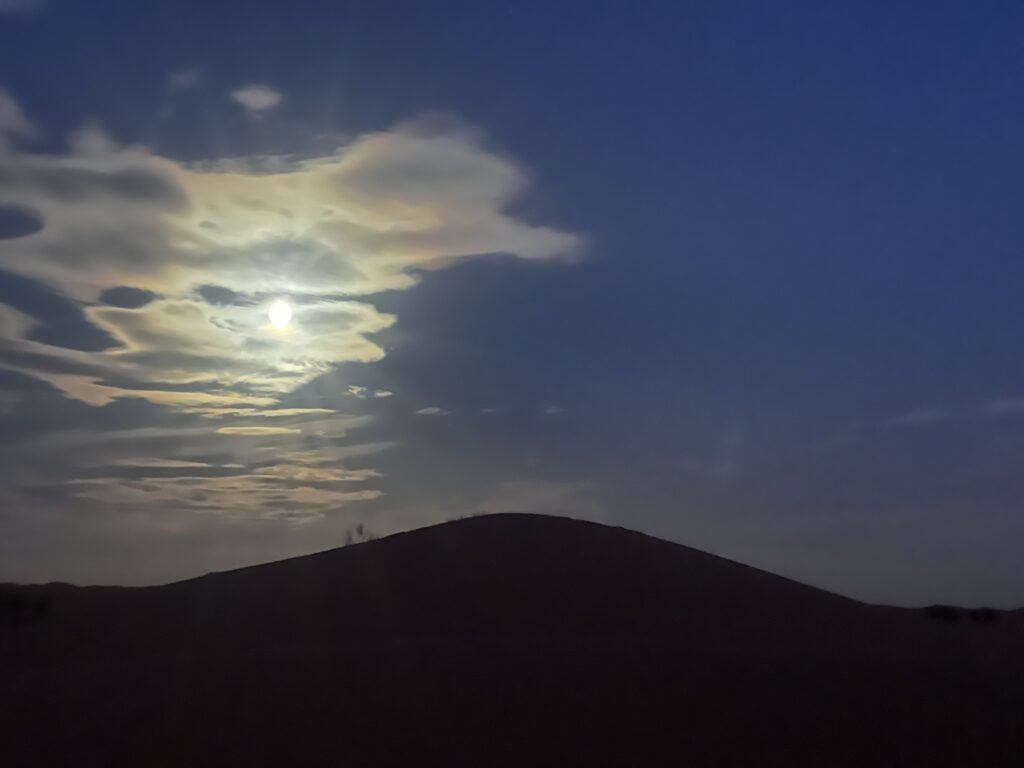




コメント